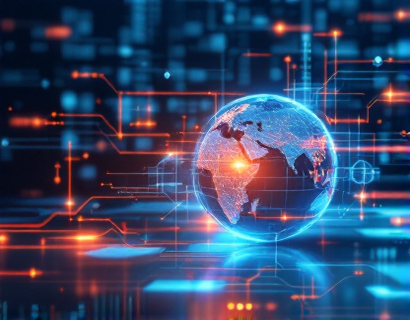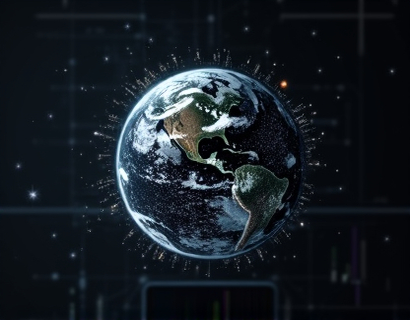Revolutionizing Global Communication: Advanced AI Translation Software for Seamless Multilingual Document Conversion
The advent of cutting-edge AI translation software has marked a significant turning point in global communication, enabling businesses and individuals to transcend linguistic barriers with unprecedented ease and accuracy. This technology is designed to convert text into multiple languages with precision and cultural sensitivity, thereby saving valuable time and resources in the translation process. The integration of artificial intelligence in document translation has not only streamlined communication but has also opened new avenues for global collaboration and business expansion.
In an increasingly interconnected world, the need for efficient and accurate multilingual document translation solutions has become more critical than ever. Traditional translation methods often involve human translators, which can be time-consuming and costly, especially for large volumes of text. Moreover, human translators may inadvertently introduce cultural misinterpretations or inconsistencies. AI translation software addresses these challenges by providing a swift, accurate, and culturally sensitive translation service, making it an indispensable tool for modern communication.
The core functionality of advanced AI translation software lies in its ability to understand and interpret context, idioms, and nuances in language. Unlike rule-based translation systems, AI models are trained on vast datasets, allowing them to learn from diverse linguistic patterns and cultural contexts. This training enables the software to produce translations that are not only linguistically accurate but also culturally appropriate, ensuring that the intended message is conveyed effectively across different languages and regions.
One of the key advantages of AI translation software is its scalability. Businesses can process large volumes of documents in multiple languages without a proportional increase in costs or time. This scalability is particularly beneficial for multinational corporations that deal with a high volume of international correspondence, contracts, and reports. By automating the translation process, companies can focus on core business activities while ensuring that all documents are accurately translated and ready for use in various markets.
Accuracy is paramount in document translation, as errors can lead to misunderstandings, legal issues, and loss of credibility. AI translation software employs sophisticated algorithms and machine learning techniques to minimize translation errors. These systems continuously learn and improve from each translation task, enhancing their accuracy over time. Additionally, the software can be fine-tuned for specific industries or domains, ensuring that technical and specialized terminology is handled with precision.
Cultural sensitivity is another critical aspect of effective translation. AI translation software is designed to consider cultural nuances and context, avoiding literal translations that might offend or confuse the target audience. For instance, idiomatic expressions and colloquialisms are translated in a way that resonates with the cultural background of the intended readers. This approach ensures that the translated content is not only linguistically correct but also culturally relevant and engaging.
The benefits of AI translation software extend beyond just accuracy and cultural sensitivity. It significantly reduces the time and resources required for translation tasks. Human translators, while skilled, have limited capacity and can be bottlenecks in the communication process. AI translation software can work around the clock, processing documents at a speed that is unattainable by human translators. This efficiency is particularly valuable in time-sensitive scenarios, such as emergency communications, legal documents, and real-time customer support.
For individuals, AI translation software offers a convenient and accessible way to communicate across languages. Travelers, students, and language learners can use these tools to navigate foreign languages, understand cultural contexts, and enhance their learning experience. The ease of use and instant results make AI translation software an essential tool for anyone dealing with multilingual content in their daily lives.
The implementation of AI translation software in various industries has led to significant improvements in global collaboration. In the legal sector, for example, accurate and timely translation of contracts and legal documents is crucial. AI translation software ensures that legal texts are not only accurately translated but also adhere to the legal standards of the target jurisdiction. This reduces the risk of misinterpretation and legal disputes, fostering smoother international business transactions.
In the healthcare industry, precise translation of medical documents is vital for patient care and safety. AI translation software can help translate patient records, medical research, and instructional materials, ensuring that healthcare providers and patients have access to accurate information regardless of language barriers. This capability is particularly important in global health initiatives and emergency responses where timely and accurate communication can save lives.
The education sector has also benefited from AI translation software. Language barriers often hinder the exchange of educational resources and collaborative research projects. With AI translation, educators and researchers can share knowledge and materials across languages, promoting a more inclusive and diverse learning environment. Students and faculty can access a broader range of resources, enhancing their educational experiences and fostering global academic collaboration.
In the realm of marketing and customer service, AI translation software enables businesses to reach a global audience effectively. Companies can translate marketing materials, product descriptions, and customer support content into multiple languages, ensuring that their message is understood by customers worldwide. This global reach not only expands market opportunities but also enhances customer satisfaction by providing support in their native languages.
The technology behind AI translation software is continuously evolving, driven by advancements in natural language processing, machine learning, and deep learning. Neural machine translation (NMT) is a prominent approach that has revolutionized translation quality. NMT models use neural networks to understand the context and meaning of text, producing more natural and fluent translations. These models are trained on large datasets and can capture complex linguistic structures, resulting in translations that are often indistinguishable from those produced by human translators.
Another significant development is the integration of context-aware translation, which takes into account the broader context of the text, including previous sentences and the overall document. This approach ensures that translations are consistent and coherent, reducing the risk of misinterpretation. Context-aware translation is particularly useful for translating long documents, such as technical manuals, legal agreements, and literary works, where maintaining consistency is crucial.
Furthermore, AI translation software is becoming increasingly user-friendly, with intuitive interfaces and seamless integration with existing workflows. Many platforms offer APIs and plugins that can be easily incorporated into websites, content management systems, and enterprise software. This flexibility allows businesses and individuals to leverage translation capabilities without the need for extensive technical knowledge or significant infrastructure changes.
The future of AI translation software holds even more promise. As AI models become more advanced, we can expect translations to become even more accurate and nuanced. The integration of emotional intelligence and sentiment analysis will enable software to capture and convey the emotional tone of the original text, making translations more empathetic and relatable. Additionally, the development of multilingual models that can translate between multiple languages simultaneously will further enhance the efficiency and versatility of these tools.
In conclusion, AI translation software represents a transformative force in global communication, offering precise, culturally sensitive, and efficient multilingual document translation. By leveraging the power of AI, businesses and individuals can overcome language barriers, fostering better understanding and collaboration across the globe. As the technology continues to evolve, the potential for enhanced global connectivity and cooperation is immense, paving the way for a more interconnected and harmonious world.










































